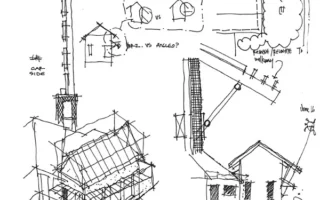Introduction:
In the dynamic landscape of modern business, organizations face the challenge of aligning their strategic goals, processes, technologies, and resources to drive sustainable growth and competitive advantage. Enter business architecture, a discipline that provides a structured framework for understanding and orchestrating the complex interplay between business strategy, operations, and IT. In this exploration, we delve into the concept of business architecture, uncovering its essence, components, methodologies, and practical applications.
1:Understanding Business Architecture:
A Blueprint for Success At its core, business architecture serves as a holistic blueprint that articulates how an organization operates, evolves, and creates value for its stakeholders. It encompasses the alignment of business strategy, capabilities, processes, information, and technology to achieve desired outcomes and drive organizational transformation. By providing a common language and visual representation of business components and relationships, business architecture facilitates strategic decision-making, innovation, and continuous improvement.
2:Components of Business Architecture:
Building Blocks for Organizational Transformation Business architecture comprises several key components that collectively define the structure and dynamics of an organization:
1.Business Strategy:
The overarching direction and objectives that guide an organization’s decision-making and resource allocation. Business architecture aligns business strategy with operational capabilities and initiatives to ensure strategic goals are effectively translated into actionable plans.
2.Capabilities Model:
A structured framework that defines the core competencies and abilities required to deliver value to customers and stakeholders. Business architecture maps capabilities to business processes, functions, and roles, enabling organizations to assess their strengths, weaknesses, and gaps.
3.Business Processes:
The end-to-end sequences of activities and workflows that transform inputs into outputs to fulfill business objectives. Business architecture models and analyzes business processes to identify inefficiencies, bottlenecks, and opportunities for optimization and automation.
4.Information Architecture:
The structure, flow, and governance of data and information assets within an organization. Business architecture defines data entities, relationships, and usage patterns to ensure data integrity, availability, and usability for decision-making and operational excellence.
5.Technology Architecture:
The hardware, software, networks, and IT infrastructure that support business operations and enable digital capabilities. Business architecture aligns technology investments and initiatives with business needs and priorities to maximize ROI and mitigate technological risks.
3:Methodologies and Frameworks:
Guiding Principles for Business Architecture Various methodologies and frameworks provide guidance and best practices for developing and implementing business architecture initiatives:
1.The Open Group Architecture Framework (TOGAF):
TOGAF is a widely adopted framework for enterprise architecture, including business architecture, that provides a structured approach to architecture development and governance.
2.Business Process Model and Notation (BPMN):
BPMN is a graphical notation standard for modeling business processes, activities, and interactions, enabling stakeholders to visualize and analyze process flows and dependencies.
3.Capability Maturity Model Integration (CMMI):
CMMI provides a set of best practices and maturity levels for assessing and improving organizational capabilities, including those related to business architecture and process management.
4.Business Motivation Model (BMM):
BMM is a conceptual framework for aligning business strategy with operational execution, helping organizations articulate their goals, objectives, and performance metrics.
4:Practical Applications of Business Architecture:
Driving Organizational Agility and Innovation Business architecture finds application across a wide range of domains and initiatives, including:
1.Strategic Planning and Alignment:
Business architecture enables organizations to align business strategy, capabilities, and resources to achieve strategic objectives and respond effectively to market changes and competitive pressures.
2.Business Transformation and Change Management:
Business architecture provides a roadmap for organizational transformation initiatives, such as mergers and acquisitions, digitalization, and process optimization, by identifying dependencies, risks, and opportunities for improvement.
3.IT Portfolio Management:
Business architecture helps organizations rationalize and prioritize their IT investments and initiatives based on business value, strategic alignment, and technical feasibility, thereby optimizing resource allocation and mitigating project risks.
4.Customer Experience Design:
Business architecture facilitates the design and optimization of customer-centric processes, products, and services by mapping customer journeys, touchpoints, and interactions to business capabilities and operational workflows.
5:Challenges and Considerations in Business Architecture:
Implementation While business architecture offers valuable benefits and insights, its implementation may encounter challenges such as:
1.Organizational Silos and Resistance to Change:
Breaking down silos and fostering cross-functional collaboration and alignment is essential for successful business architecture implementation.
2.Data Quality and Integration:
Ensuring the accuracy, completeness, and consistency of data across business systems and processes is critical for effective business architecture analysis and decision-making.
3.Complexity and Scalability:
Managing the complexity of business architecture models and ensuring their scalability to accommodate evolving business needs and requirements requires careful planning and governance.
4.Continuous Improvement and Adaptation:
Business architecture is not a one-time exercise but an ongoing process of refinement and adaptation to changing business conditions, market dynamics, and technological advancements.
Conclusion:
Harnessing the Power of Business Architecture for Organizational Success In an era of rapid change and uncertainty, organizations must embrace business architecture as a strategic enabler for driving agility, innovation, and competitive advantage. By leveraging the principles, methodologies, and frameworks of business architecture, organizations can navigate complexity, align their strategies with execution, and unlock new opportunities for growth and value creation. As the blueprint for organizational success, business architecture empowers leaders, practitioners, and stakeholders to envision, orchestrate, and realize their collective aspirations for a brighter future.




